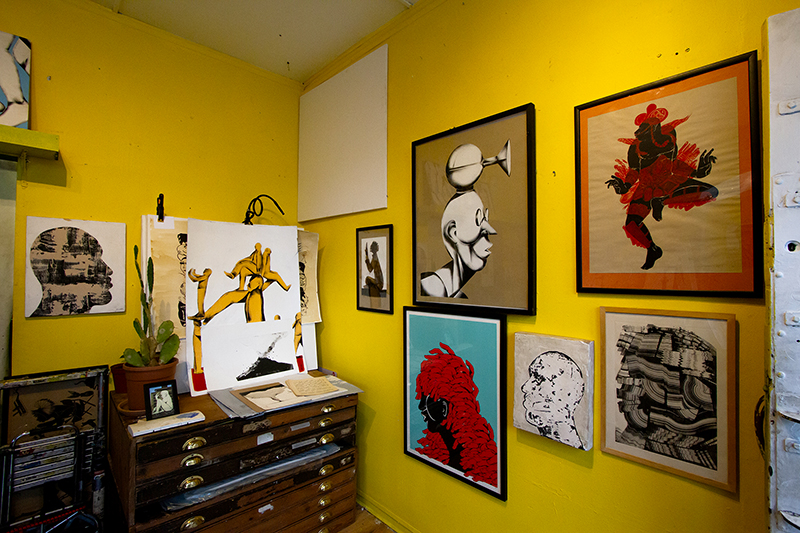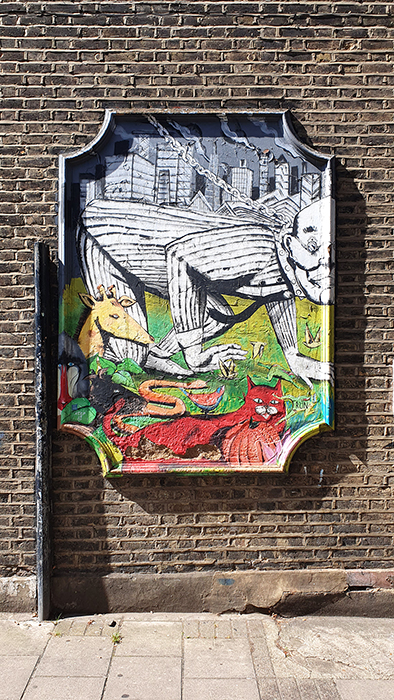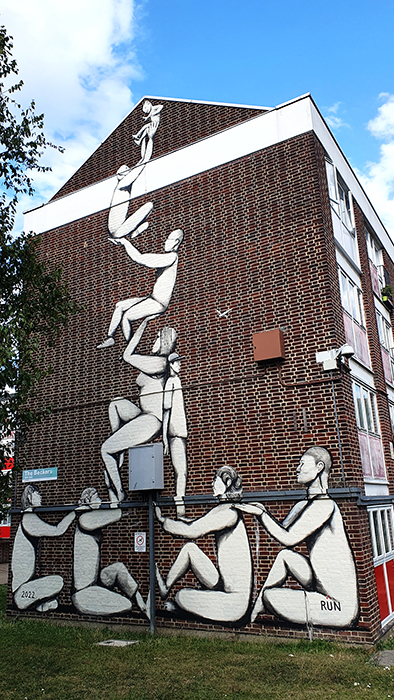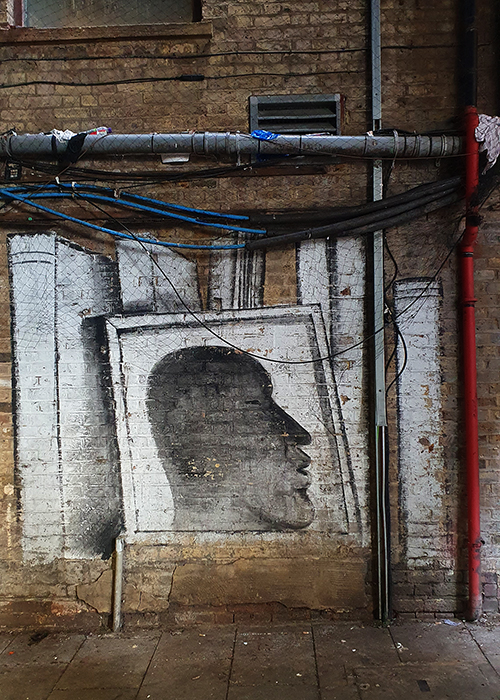Originally from Ancona, a coastal town in Italy with a rich graffiti tradition, Giacomo Bufarini, better known as RUN, emerged as one of the pioneers of Italian street art. His distinctive, surreal figures have since gained international recognition, appearing at festivals and biennials around the world. Through his murals, RUN pushes boundaries, delving into themes of cultural exchange, human connection, and the complexities of urban life.
RUN’s Journey: From Ancona to the Frontlines of Italian Street Art
I started painting on the streets over 20 years ago—actually, even earlier, because I came from graffiti. Ancona had this big event called the Juice Jam, back in ’94 to ’96. I wasn’t doing graffiti yet, but I’d go to watch, and seeing people paint was just mind-blowing.
Even though he attended art school, Giacomo RUN Bufarini considers himself a self-taught artist, crediting his mother for introducing him to drawing. He vividly remembers their kitchen table, always full of brushes and paint, where his mother, a skilled trompe-l’œil artist, nurtured his creativity. Surrounded by her artistic tools, Giacomo’s first steps in drawing were shaped by her guidance.
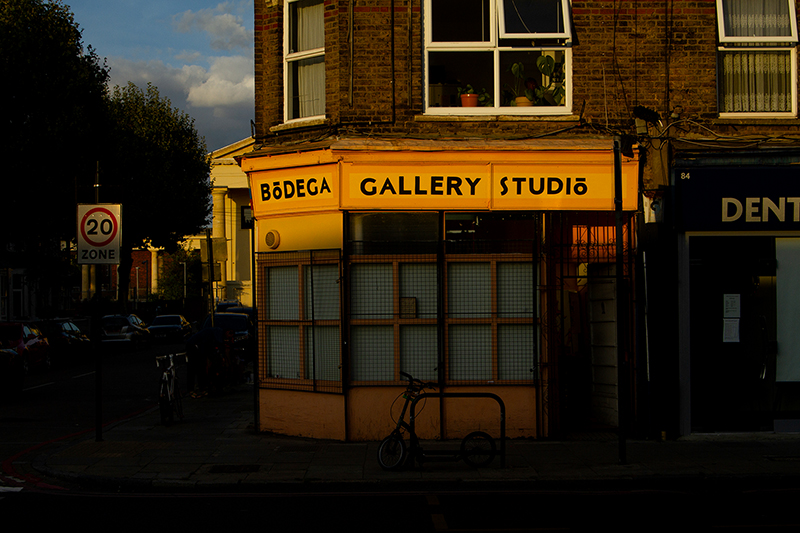
As a teenager, Giacomo discovered graffiti, a turning point in his creative journey. With Ancona hosting the Juice Jam, a magnet for talented writers from all over Europe, he found himself at the heart of a vibrant, fresh culture. It was an explosive experience, filled with excitement and energy. His first tag was MOODSZ, then he wrote ZONEX, and eventually OPAC.
“Back when I was writing OPAC, me and a graffiti writer from Ancona called BLAST went to Rome for a Rage Against the Machine concert. We got tickets for 5000 liras and stayed at HEKTO’s place, a graffiti writer from Rome. However, that day, it was pouring rain, so the concert got canceled. HEKTO and PANDA said, ‘Let’s go paint the Metro B.’ We didn’t even know what Metro B was! I was 15, writing PAC, but in Rome there’s a graffiti crew called PAC, so PANDA told me I couldn’t use that. That night, I wrote DOZE instead. Honestly, I was terrible at graffiti lettering—they even had to finish that piece for me! I was more into drawing characters, though nothing like what I draw now.”
After finishing art school, Giacomo moved to Bologna to study at the Art Academy during the early 2000s, a pivotal time and place for the birth of Italy’s street art scene. Though he stayed in Bologna for less than a year before moving to Florence, he remained in touch with pioneer street artists like BLU and Ericailcane. Together, they painted figurative works illegally on the walls of Bologna’s squats using minimalist techniques—rollers, brushes, and black-and-white paint—distancing themselves from traditional graffiti, which relied on spray paint. RUN, along with BLU and Ericailcane, helped pioneer this figurative approach, laying the groundwork for the first wave of street art in Italy.
“Me and BLU, we’ve known each other since Ancona—we kind of started together. Even after I moved to Florence, we kept meeting up. Bologna was way more lively than Florence, more underground and full of things happening. In 2006, BLU, Ericailcane, and I took our first train trip with tickets and hotel covered to paint at ‘Street Attitude’ in Bolzano, a big graffiti jam. We stood out, painting weird figurative murals with brushes. Later, I joined them in Milan to paint the facade of Cox 18, where I met DEM, who quickly became part of our group. We weren’t an official crew, but we painted together a lot, using brushes for figurative work while everyone else was using spray cans for graffiti.”
At the time, Giacomo’s work stood out on the walls of Florence. He was painting small characters and writing odd, cryptic phrases alongside them. His style was completely different from the graffiti that was taking hold in various Italian cities. While graffiti was becoming more recognizable, Giacomo’s work often left people puzzled—he described the general reaction to his art as, “What the fuck is that?”
Interview with RUN: London’s Sunday Painter
“I came from Italy, where we’d head out to the countryside, find an abandoned factory, bring music, wine, and just chill while we painted. But in London, it was the complete opposite. You had to stay alert or you’d get busted. People were scared to paint on the streets because the fines were huge if you got caught, and you could even end up in jail.”
RUN moved to London in 2007, when the street art scene was still fresh and genuine. It was the time of Banksy’s rapid rise, and many artists were actively painting in the streets. The scene had an exciting, raw energy, but it was completely different from what Giacomo had known in Italy. Not only was the London street art scene less laid-back than what Giacomo was used to in Italy, but there was also a noticeable cultural clash. The attitude of street artists in London was different—more individualistic, with a strong focus on separate works. Collaboration wasn’t as common, which stood in stark contrast to Giacomo’s experience, where artists often fused their styles together. This new approach to street art presented a challenge for RUN, who thrived on creative collaborations.
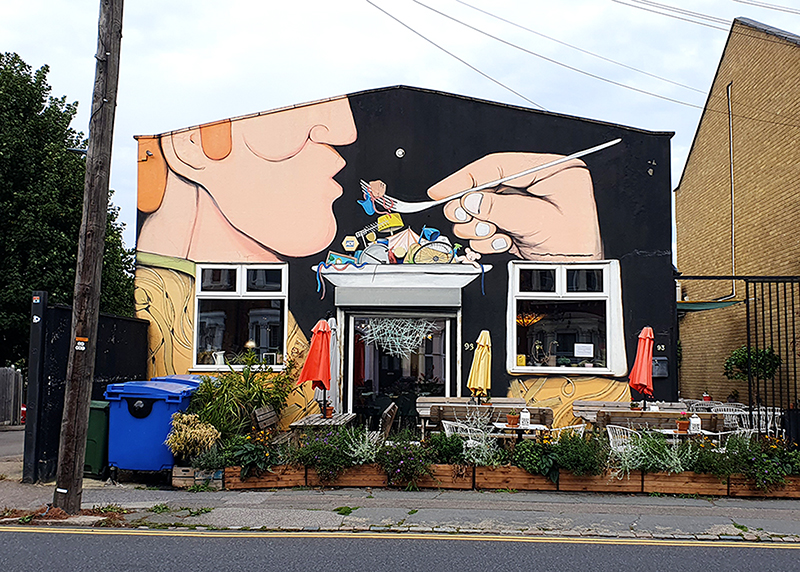
“When I got here, the scene was fresh and exciting, just like in Italy. But the big difference was that I was all about collaboration, and the people I met didn’t really get that. Here, it was more like, ‘your piece,’ ‘my piece next to it,’ no blending. And back then, I was really into fusion. If it worked, you could keep building on it. But that kind of thing just wasn’t happening here.”
One more challenge for Giacomo in London was the city’s architecture, which seemed almost anti-street art. In England, especially in London, the space felt cramped, with houses packed tightly together, small windows, and narrow gaps. The surfaces were mostly brick, making them difficult to paint on. Unlike the smooth, expansive walls he was used to in Italy, these small, textured spaces made it challenging for him to create large, flowing murals, forcing him to adapt his style to the unique constraints of the city’s built environment.
“In my way of painting, it’s not easy in this environment. You really have to be selective with your space. Then in 2009, I finally said, ‘Okay, let’s give it a go.’ In London, the streets are always buzzing, so I tried painting on a Sunday afternoon, thinking people would be more relaxed and less likely to notice. I even started a blog called ‘The Sunday Painter’ because of that. It also helped that I didn’t use spray paint, which is more associated with crime here, and I chose places where I could paint for hours without interruption. And it worked—people didn’t notice me, or they just assumed I was doing something official, maybe for the council or on commission.”
RUN’s first piece in London was at Finsbury Park Station, on boards that were covering a very old pub. Interestingly, it was said to be a place where Mick Jagger had once played.
“Yeah, London’s got that history from 30 years ago, you know? Bob Marley walked these streets, and Bob Dylan probably had a drink just down the road. It’s full of stories like that.”
Since then, RUN has painted in some of London’s most iconic locations, participated in festivals, and exhibited in prestigious galleries, all while taking his art abroad to China, Africa, and the USA. Despite his international success, he remains remarkably humble, staying rooted in Clapton, London, where he runs an art shop. Here, he handpicked a few local walls for painting, treating them as both artistic and social experiments, reflecting his deep connection to the community and his down-to-earth approach to art.
Interview with RUN: Cultivating Walls Around Clapton
When I reached out to Giacomo for an interview for my upcoming London street art book, I asked him for the locations of his works in the city to photograph them. When he replied, I noticed all the walls were in Clapton, clustered close together. His lighthearted response, “I’m a lazy painter,” hinted at something deeper, which became clear when we finally met for the interview.
“I’ve stepped out of the London street art scene. I used to paint in Shoreditch and Brick Lane, but now I’m not interested in going down there anymore. I value my work not just as a quick photo, but as something that can last for years—not forever, but still long-lasting. When I settled in Clapton, I started painting here and gradually found a few spots. I wouldn’t say they’re ‘mine,’ but it does feel like my own yard. I mostly stick to these same walls, and I’m almost the only one doing it like this. Clapton feels like a village—there are no tourists here, and it’s nothing like Brick Lane, where a piece might last less than 24 hours before being painted over. Here, my work can stay up for years, or at least until I decide to paint something new on top of it. The residents, my neighbors, now expect to see something fresh on those walls every now and then.”
In a vast metropolis like London, it’s easy to feel overwhelmed, so finding your own small community can be essential. Similarly, as the street art scene rapidly shifts towards large-scale, branded murals towering over areas like Brick Lane and Shoreditch, artists might feel the need to carve out their own space. RUN has done just that, creating his own archipelago of walls in his neighborhood, where he can express himself freely, adding meaning to his local environment and engaging his neighbors with thought-provoking themes.
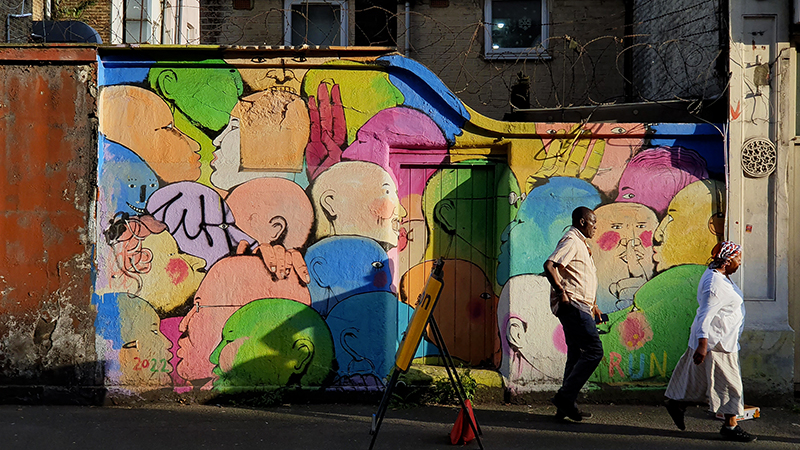
“There’s a wall in Clapton that I’ve been painting for over ten years now, probably around ten different versions. I picked that spot more than a decade ago because it looked completely abandoned, so I took it over. What’s amazing is that people now expect the wall to change. Sometimes I repaint it twice a year, other times I leave it for a couple of years. It’s been vandalized a few times—not by graffiti artists, but by people who didn’t like it. Once, people even thought one of my paintings was racist, which really surprised me, because my work has always been celebrating diversity.”
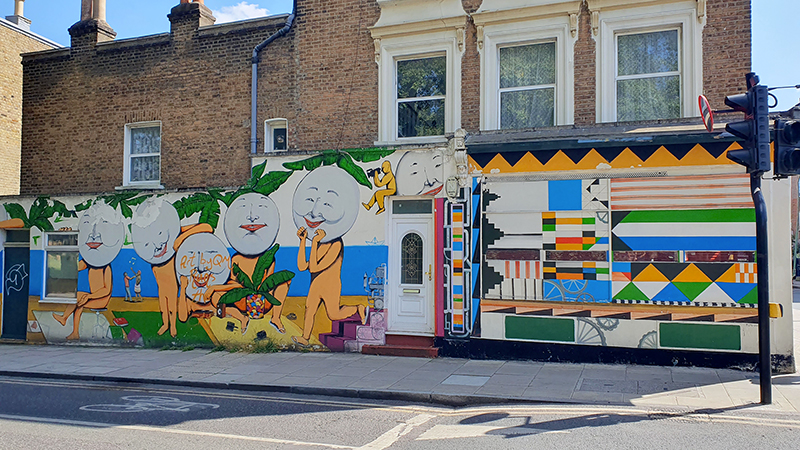
RUN has been nurturing his walls like a gardener, layering one mural over another. This evolving practice allows him to stay true to the essence of authentic street art, which is sadly fading for many other artists.
Each human-scale mural RUN creates for his neighbors reflects his curiosity about human connection, while fostering a deep and ongoing dialogue with the community. By cultivating both relationships and artistic expression, RUN gives back to the people and places that have become his home, making his art an integral part of the local landscape.
If you are in London, stop by to visit Giacomo at his beautiful art shop in Clapton, where he’ll great you with a warm Italian smile. You’ll find prints, artworks, and the best espresso in London. And don’t forget to say Ciao for me!
